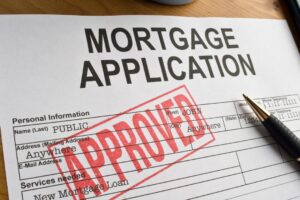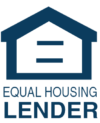Among the myriad of mortgage options available, conventional loans are one of the most common choices. These mortgage loans are the backbone of the housing market. They help buyers who want more control over their purchases.
Conventional loans, also called conforming loans by your lender, are home loans not insured or guaranteed by the government. This makes them different from FHA or VA loans. Conventional mortgages need higher credit scores, specific down payments, and certain debt-to-income ratios.
This guide gives you the full scoop about conforming loan mortgages. It explains their features, rules, and types. It helps you see their pros and cons. This article will also help you learn about fixed-rate and adjustable-rate mortgages. This info will help you see if this loan fits your needs.

Understanding Conventional Loan Mortgages
A conventional mortgage is a common type of home loan not backed by the government. Instead, it is offered through private lenders or government-sponsored enterprises like Fannie Mae and Freddie Mac. As a borrower, you need to meet specific credit and financial criteria to qualify for a conventional loan. These loans are versatile, offering both fixed-rate and adjustable-rate options. They can be used to finance different types of properties, making them a flexible choice for many potential homeowners.
Definition and Characteristics
A conventional loan is a mortgage that isn’t guaranteed by a government entity. Conventional loans come from private lenders. This is different from FHA or VA loans. They can be either conforming, which means they meet guidelines set by the Federal Housing Finance Agency (FHFA), or non-conforming, which do not. These loans are popular because they are flexible for property financing. They cover primary homes, vacation homes, and income properties.
To qualify for a conventional mortgage, borrowers usually need a good credit score. This type of loan typically requires a larger down payment than government-backed options. However, it provides choices between fixed-rate and adjustable-rate mortgages. A fixed-rate loan has steady interest rates over time, while an adjustable-rate loan might start lower and change over the loan term. This flexibility allows borrowers to choose a plan that fits their needs and financial situation.
Differences from Government-Backed Loans
Conventional loans differ from government-backed loans in several key ways. They aren’t insured by agencies like the FHA or VA. Instead, private lenders shoulder the risk. This means they require borrowers to meet stricter credit score standards and put down more money upfront. As a result, you might need a higher credit score for a conventional loan compared to government options.
These loans provide more liberty in property types, allowing you to finance a variety of homes. This includes secondary homes or investment properties, which may have more restrictions under government-backed programs. Conventional loans often have fewer fees and less red tape. They are appealing if you qualify. This can mean lower monthly payments and overall savings in some cases, though it relies heavily on your financial health and credit scores.
Requirements for Conventional Loans
Conventional loans are a popular choice for many homebuyers. These are home loans offered by private lenders and are not backed by the government. To qualify, you need to meet specific criteria set by lenders. These criteria revolve around your credit score, debt-to-income ratio, and down payment amount. Additionally, the maximum loan limit for a single-family home in most U.S. areas is $806,500, though this can be higher in some places. Understanding these requirements can help you assess if a conventional loan is the right fit for you.
Credit Score Criteria
Credit score is a crucial factor for conventional loans. Typically, a score of 620 is the minimum requirement. However, some lenders might set higher criteria. A higher credit score can help you access better loan options and lower interest rates. It also impacts your fees and the overall cost of the loan. Lenders will also look at your credit history, including monthly payment patterns and debt levels. Conventional loans often need better credit scores than government-backed loans. Keeping a good credit profile is important.
Debt-to-Income Ratio
Your debt-to-income (DTI) ratio measures how much of your income goes toward debt payments. For a conventional loan, a DTI below 36% is ideal. However, lenders may accept up to 43% in some cases. Some borrowers might even pass with a DTI up to 49% if they show other strengths such as high credit scores or extra assets. A lower DTI suggests that you are less risky to lenders, possibly helping you secure better loan terms. Debt-to-income ratio is key for conventional loans. They usually have stricter DTI rules than government-backed mortgages.
Down Payment Necessities
The down payment for a conventional loan varies but often starts as low as 3%. Most lenders require at least 5%. To avoid private mortgage insurance (PMI), a 20% down payment is ideal. Down payments can come from personal savings, gifts, or grants. A higher credit score might qualify you for better terms and lower down payment requirements. The lender will base the final down payment on the lesser of the purchase price or the property’s appraised value. Meeting the down payment requirement can save you on long-term costs.
Property Value Assessment
In the context of conventional loans, property value assessment concerns the appraisal of the home you wish to buy. Though not directly addressed in the earlier sections, an appraisal helps ensure the property is worth the amount you plan to borrow. It determines if your down payment matches the property’s actual value, ensuring both you and your lender are making a sound financial decision. If the appraised value is lower than the purchase price, you might need to negotiate the price or adjust your loan amount to proceed.
Types of Conventional Loans
Conventional loans are a popular choice for home buyers who want flexibility and competitive terms. These loans are not insured by any government agency and are provided by private lenders. The main types of conventional loans are conforming and non-conforming loans. Conforming loans comply with the standards set by the Federal Housing Finance Agency (FHFA), which includes size limits. Non-conforming loans, on the other hand, do not meet these standards and often involve larger amounts that exceed typical loan limits. Conventional loans can be used to finance different types of properties, such as primary homes, vacation houses, and investment properties.
Fixed-Rate Mortgages
Fixed-rate mortgages are a common type of conventional loan. They offer borrowers a stable and predictable monthly payment. The interest rate in a fixed-rate mortgage remains the same throughout the loan’s life, unaffected by market changes. This makes them attractive for those planning their finances over a long period. Private lenders or government groups like Fannie Mae and Freddie Mac usually offer fixed-rate mortgages. However, borrowers should have a good credit score to qualify. While initial interest rates may be higher than those of government-backed mortgage loans, the stability they provide is often worth it for many borrowers.
Adjustable-Rate Mortgages
Adjustable-rate mortgages (ARMs) offer a fixed interest rate for an initial period, usually between three to ten years. After this period, the interest rate can change based on market conditions. This means the monthly payment could go up or down over time. ARMs can be appealing for buyers intending to sell or refinance before the adjustable period starts. This is because ARMs often have lower initial payments compared to fixed-rate mortgages. Being one of the main types of conventional loans, ARMs can be a good choice for those seeking lower starting payments and planning short-term property ownership.
Renovation loans
Renovation loans offer an option for those looking to buy a property that needs some work. These loans are different from other types of conventional loans because they include extra funds for home improvements. While conventional loans focus on property acquisition, renovation loans allow buyers to finance both the purchase and the upgrades needed. Though conventional loans remain popular, renovation loans cater more to buyers who wish to improve and increase the value of their property. Borrowers must know that renovation loans may have extra rules. These differ from standard conventional loans.
Comparing Conventional Mortgages with Other Loan Types
Conventional mortgages are popular home financing options, but they differ from government-backed mortgage loans like FHA, USDA, and VA loans. These loans are not tied to specific government programs, which gives them certain advantages and disadvantages. For instance, conventional loans usually have stricter financial requirements, such as higher credit scores and larger down payments, compared to FHA loans. While they do require mortgage insurance if the down payment is less than 20%, it can be canceled once enough equity is built. Conventional mortgages offer more flexibility. You can use these loans to finance primary homes, second homes, and investment properties. FHA loans mainly cover primary homes. Furthermore, conventional loans often come with fewer restrictions and higher loan limits, making them suitable for a broad range of home financing needs.

Benefits of Conventional Mortgages
Conventional mortgages offer distinct benefits that appeal to a variety of home buyers. One of the main advantages is the easier removal of private mortgage insurance (PMI). Unlike government-backed loans, the PMI on conventional loans can be canceled once you achieve 20% equity in the home. This feature can save borrowers money over time. Additionally, conventional loans often have fewer fees. This makes them more cost-effective for borrowers who meet the required financial standards. They also offer flexible terms, including the option to choose between fixed and adjustable-rate mortgages. This flexibility can help borrowers find a loan that best fits their financial needs. Furthermore, high loan limits associated with conventional mortgages mean they can accommodate a wider range of home prices.
Drawbacks and Limitations
Despite their benefits, conventional loans come with certain drawbacks and limitations. Larger down payment requirements are a common hurdle for many borrowers, as these loans typically require at least a 5% down payment. This can make them less accessible for some compared to government-backed options, which often require smaller down payments or none at all, like in the case of VA loans. Another limitation is the credit score requirement. Conventional loans generally call for higher credit scores, which presents a challenge for those with lower credit ratings. Conventional loans lack government-backed features. They need stronger financial health for approval. These loans often have a due-on-sale clause. This stops new buyers from taking over the loan, limiting assumability. These factors can block some homebuyers. This makes government-backed loans more attractive in some cases.
Advantages and Disadvantages of Conventional Loans
Conventional loans are a popular choice for many homebuyers due to their flexibility and potential cost savings. Unlike government-backed mortgages, such as FHA loans, conventional loans are not insured by a federal agency. They are instead offered by private lenders like banks and credit unions. This type of loan can be used for different property types, including primary homes, vacation spots, and investment properties. You must meet stricter rules to qualify for a conventional loan. This can help or limit you based on your finances.
Pros: Flexibility and Control
One of the main advantages of conventional loans is their flexibility. Unlike government-backed loans, they can be used to purchase various types of properties, offering more options for borrowers. These loans are available through private lenders, which means borrowers have greater control over the terms. This control allows for more personalized loan conditions. Another benefit of conventional loans is choosing between fixed-rate or adjustable-rate mortgages.
Conventional loans do not need strict government rules. This lets lenders have more freedom to approve borrowers. If borrowers pay a larger down payment, they can avoid private mortgage insurance. This can lower long-term costs. This flexibility makes conventional loans good for people with strong credit and stable finances. They let homeowners adjust their mortgage to fit their needs. They do not have the limits of government-backed loans.
Cons: Stricter Requirements
Conventional loans offer flexibility. They also have stricter rules. These loans require a higher credit score than government-backed options, with a minimum score of 620 usually needed. This can be a challenge for individuals with less-than-perfect credit histories. Borrowers are also required to meet a more rigorous debt-to-income ratio, typically below 43%. This means your monthly debt payments relative to your income must be lower to qualify.
Another challenge is the need for a larger down payment. While some conventional loans allow as low as 3%, most require 20% to avoid private mortgage insurance. Conventional loans also have a due-on-sale clause, making them non-assumable in most cases. This can be a downside for those who plan to transfer the loan. Despite challenges, conventional loans are a good choice for those who qualify. They can cost less than some government-backed loans.

Is a Conventional Loan Right for You?
Conventional loans are a popular choice among home buyers. Unlike FHA or VA loans, they are not backed by the government. Instead, you can get them from private lenders like banks and credit unions. These loans often require a higher credit score, usually 620 or above, and a steady income. You will also need a down payment of at least 3% for qualifying applicants. However, keep in mind that these loans can have stricter requirements compared to government-insured options. They often come with fewer fees and higher loan limits. Understanding these aspects can help you decide if a conventional loan is the best fit for your financial situation.
Factors to Consider
Choosing a conventional loan means understanding both the benefits and challenges. These loans don’t come with government backing like FHA or VA loans. Instead, they follow guidelines set by Fannie Mae and Freddie Mac. This includes limits on the loan amount and requirements you must meet. Loan terms vary, with common options being 15, 20, or 30 years. If you don’t have a 20% down payment, you might have to pay for private mortgage insurance (PMI). But with a conventional loan, removing PMI is often more straightforward once you’ve built enough equity in your home. It’s crucial to weigh these factors to see if a conventional loan matches your home-buying goals.
Ideal Borrower Profiles
Conventional loans are ideal for borrowers with strong credit and financial stability. You typically need a good credit score and a reliable income to qualify. While these loans may offer competitive interest rates, they also require a down payment, often larger than what’s needed for government-backed loans. Borrowers should also be ready to prove their financial health through income requirements. This makes conventional loans a suitable option for those who have prepared their finances and have a decent credit history. If you meet these criteria, a conventional loan can provide flexibility and be a wise choice for purchasing a home.
At the end of the day, the choice is going to come down to mortgage payment, conforming loan limits, closing costs, or other similar factors. To learn more about whether conventional mortgage loans are the right loan programs for you, just give one of our loan officers a call.



